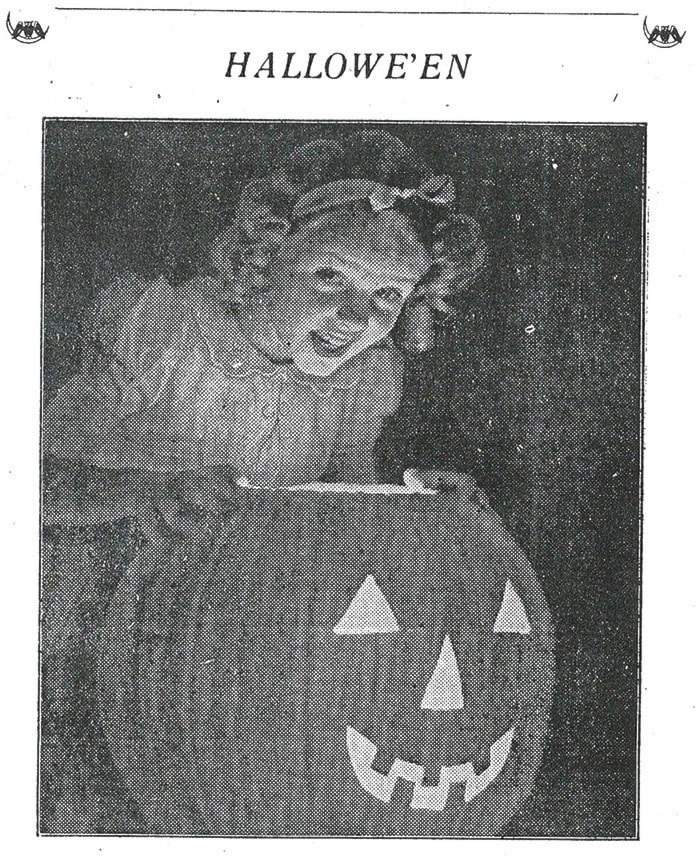With its roots in the Christian celebration of All Souls Day, the Halloween we know today developed between the world wars as a holiday mostly for children.
The first reference to “trick or treat” was in an Alberta newspaper in 1927.
The local Gazette newspaper in 1931 described “A Killing Hallowe’en Party,” where a character called “Spooky Speakeasy” was murdered and party-goers would participate in unravelling the mystery of his death.
People were asked to “mask” and pay an entry fee of 25 cents.
The mask in those days was meant to disguise, not to give the impression of being some other recognizable person.
This party was a fund-raiser for Hammond United Church.
Ten years later, as the world went to war for the second time, an article in the Oct. 31, 1941 Gazette shows a smiling girl with a large carved pumpkin. In the accompanying article, it is clear that the holiday has been given over to the “grotesquely dressed children.” At that point, war had not impinged on the children’s holiday to any extent, but there is also reference to “hoodlums” who take advantage of the licence of the night to do property damage.
By 1942, the only reference to Halloween in the Gazette was a notice in September that people should expect a quiet celebration as the use of fireworks was forbidden.
Insecurity over the state of relations with Japan in what was termed a “vulnerable area,” due to our power dams, led to the cancellation of all fireworks sales and an apology to those looking forward to the money made from selling them.
For 1943, fireworks remained banned. The main handout to the trick or treaters was an apple with some having candy or cookies.
Costumes consisted of cast-off adult clothing and masks. The parties were small and held in private homes.
But there was a dark side becoming clearer by 1943 – the hoodlum factor was growing. The Victory Loan barometer at 8th Ave (224th Street) and Lougheed Highway was destroyed. St. George’s Church was vandalized inside and out. The police were called upon to investigate. It was this delinquency problem with older boys whose fathers had gone to war that inspired Const. Kelly Irving to start his “Golden Gloves” boxing program.
For 1944, things seemed to be looking up. Homes reported up to 50 costumed children, and while apples were still a popular treat, more candy was being given out.
Rather than the destructive vandalism of 1943, the “tricks” were more often confined to the soaping or waxing of windows. This may have been due to the efforts of the Ridge Youth Movement Club, created in March of 1944, which entertained more than 60 young children at a church hall from 7-9 p.m., then switched to an orchestra for older children and young adults with over 100 people attending.
By 1945, the Ridge Youth Movement Club was firmly in charge again, holding a big party for younger children and a dance at the “pavilion in the park” (location unknown) for young adults with music provided by the CKNW orchestra.
Costumes were more of the ‘be someone else’ variety, with old-fashioned lady or pistol-packin’ mama popular with the girls and gangsters with the boys. No real vandalism was reported, so it appears that efforts to engage youth were successful.
Speaking of engaging youth, we are having a house party of our own at Haney House Museum on Oct. 30, called “Eat, Drink and be Scary,” from 11 a.m. to 3 p.m. Wear costumes and come for treats, games and Halloween crafts.
– Val Patenaude is director of the Maple Ridge museum.
